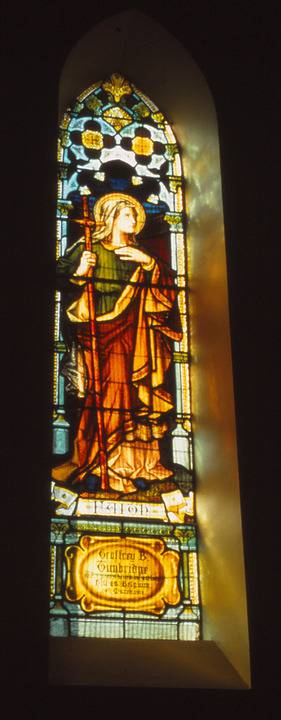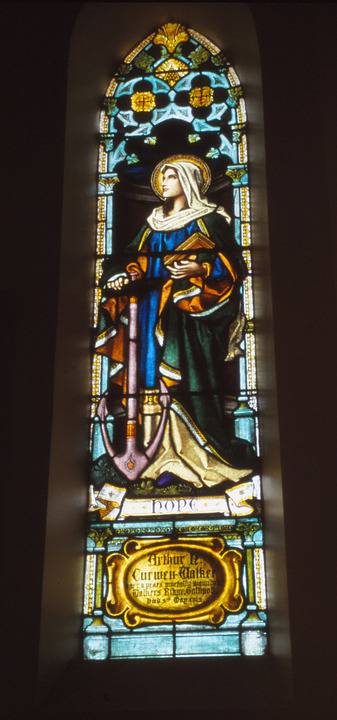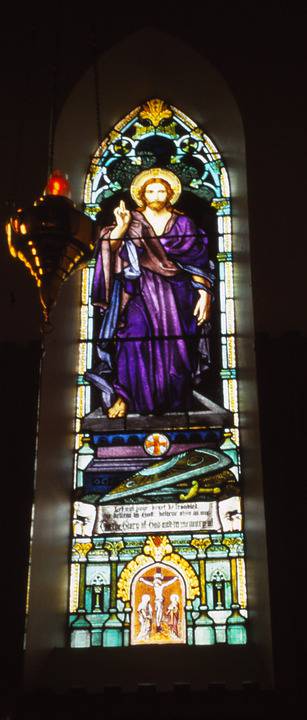The three-light window was ordered from Brooks, Robinson & Co. less than six months after the death of Geoffrey Tunbridge and was commissioned jointly by his mother, Mrs. WE (Jean) Tunbridge, and Mr. and Mrs. Henry C Curwen-Walker, the parents of Arthur H Curwen-Walker. The representations of Faith and Hope at either side of the Resurrection of Christ was an uncommon although not inappropriate format to symbolise victory over death for these two members of the church. The unveiling of the window by the Rev. F.T. Morgan Payler, took place near Armistice Day, on Sunday 23 November 1919.
Gunner Geoffrey Ballantyne Tunbridge was one of three Tunbridge brothers from Ballarat who served during the First World War. On 15 March 1917, three months before his twenty-first birthday, he enlisted in the artillery with his mother's consent; his father had died in 1905. With infantry numbers falling short of requirements, Tunbridge volunteered for transfer and embarked at Melbourne on 4 August 1917 to join 5 Battalion in England before marching into Rouelles, France in January 1918. He was posted to 5 Battery, 2 Field Brigade Australian Field Artillery on 23 January and was reported 'missing believed killed' in the Hill 60 battle at Ypres on 14 March 1918; this report was amended to 'killed in action' the next day. After a service conducted by the Reverend TT Webb on the 17 March, he was buried at Kemmel Chateau Military Cemetery, Belgium. In 1921 his mother was still enquiring whether his effects had yet come to light, only to be told that his few remaining personal items had been lost in the cargo of the Barunga, sunk by enemy action.
Arthur Herbert Curwen-Walker attended Duntroon College after his secondary schooling at Ballarat High School. He was a Staff Cadet at Duntroon and graduated as Lieutenant at the outbreak of war before embarking at Melbourne on 22 December 1914. After extensive training in Egypt where he was recognised as a most capable officer, he took part in the landing at Gallipoli with 14 Battalion on the 25-26 April 1915. He received shrapnel wounds to the abdomen on 1 May and died aboard the hospital ship Devanah on 3 May. He was buried at sea and was remembered at the Lone Pine Memorial, Gallipoli.
References & Acknowledgements
Argus, 24 November 1919, p.3; AWM Roll of Honour; NAA: B2455 Tunbridge Geoffrey Ballantyne; NAA: B2455 Curwen-Walker Arthur Herbert; The AIF Project site: www.aif.adfa.edu.au.






